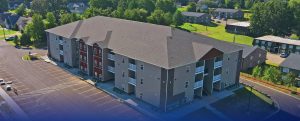Los Angeles, CA Multifamily Market Report
Market Overview
The L.A. apartment market is experiencing a cooling off in demand and increasing vacancy rates. The market remains one of the most expensive in the country, with a high concentration of cost burdened renters and an average rent of $2,190 per month. As a result of decreasing demand, rental rate growth has slowed since the summer of 2022, leading property managers to offer concessions. Despite elevated construction levels relative to L.A.’s development history, the pace is behind the national average, and the outlook for 2023 expects this trend to persist. Transaction volumes began moderating at the end of 2022 and the trend has continued throughout Q1 2023, and investors have become more selective in acquiring properties due to rising debt costs and disagreements on pricing.
Highlights
- An increase in the supply of apartments combined with a moderate decrease in demand has resulted in a rise in vacancy rates across the metropolitan area to 4.3%.
- There are currently 27,000 apartment units being built in L.A., which accounts for 2.7% of the existing inventory.
- The average price per unit of properties in Los Angeles is $420,000.
Rents | Vacancy | Construction
More than 85% of multifamily units are located in 4 & 5 Star Communities.
The L.A. apartment market has cooled in the last year, with vacancy rates rising from a long-standing low to 4.3 percent. Only 3,100 units were absorbed in the last 12 months, a significant decrease from the previous year’s record-breaking activity of over 32,000 units absorbed. While vacancy rates have increased in most submarkets, some areas still have limited rental options. Renters in L.A. have become more cautious, resulting in a drop in average asking rental prices since their peak in August 2022. While rents are still higher than a year ago, they are not climbing as quickly as in 2021 and early 2022.
In 2022, approximately 9,900 new market-rate units were added in L.A., representing a one percent increase in inventory. This pace has been stable for several years, with annual additions ranging from 9,000 to 11,000 units since 2018. However, L.A. has less development activity than other cities in the country because of high goods and labor costs, stringent zoning, and time consuming permitting processes. As a result, the city is experiencing a severe housing shortage. Nonetheless, certain parts of the city, such as Downtown L.A., Hollywood, and Koreatown, have seen increased building activity due to their readiness to handle more density.
Sales
L.A.’s multifamily market is robust, with over $10.4 billion in sales in the last year. While the city’s transaction volume has stayed strong, sales levels have slowed compared to 2021. Despite the slowdown, L.A. remains one of the most expensive metros in the nation, with an average market price of $420,000 per unit, much higher than the national average of $260,000 per unit. The market has a cap rate of 3.9 percent on average. L.A.’s position as the second-largest metro area in the U.S., its diverse economy, and its location on confined coastline land all contribute to the elevated pricing. Pricing is projected to stay constant in the coming quarters, but there is considerable uncertainty about the direction of asset values. If the current interest rate increases and increased debt expenses linger longer than projected, prices may fall in 2023.
L.A.’s multifamily housing market has remained strong, with more than $10.4 billion in sales in the last year.
L.A. by the Numbers
- Units Under Construction: 26,852
- Units Delivered in 12 Months: 9,909
- Vacancy Rate % Change YOY: 0.6%
- Asking rent Growth YOY: 2.0%
- Average Price Per Unit: $420,000
- Sales Volume 12-Month: $10.4B
- Sale Comparable 12-Month: 1,564









